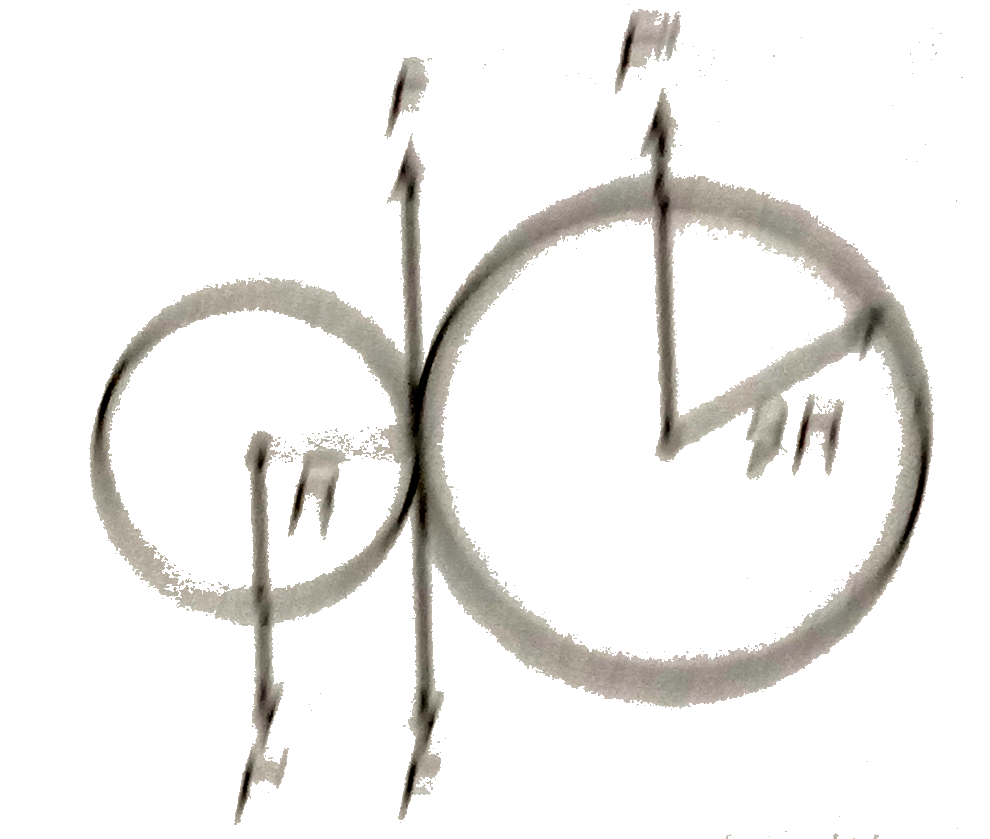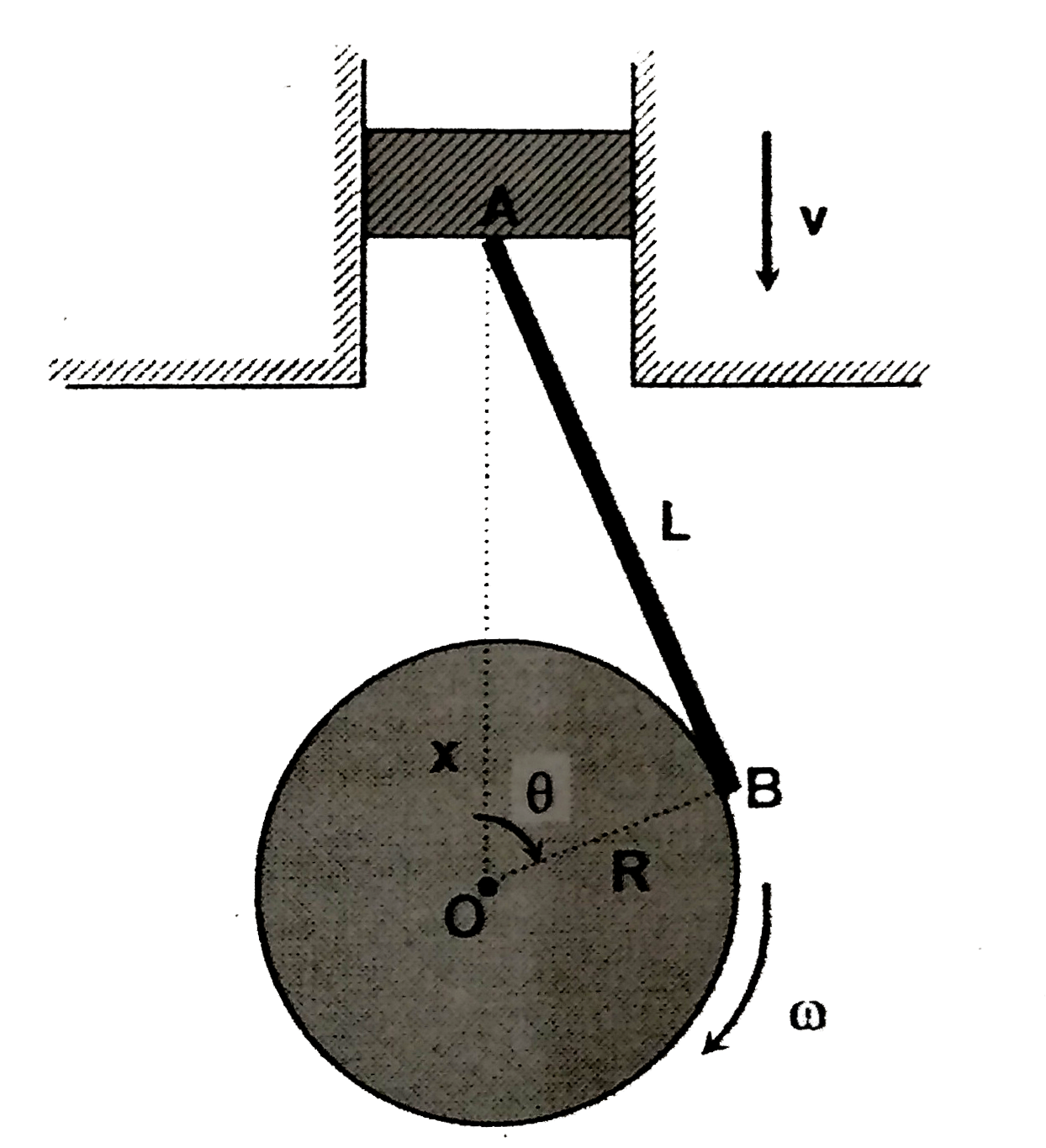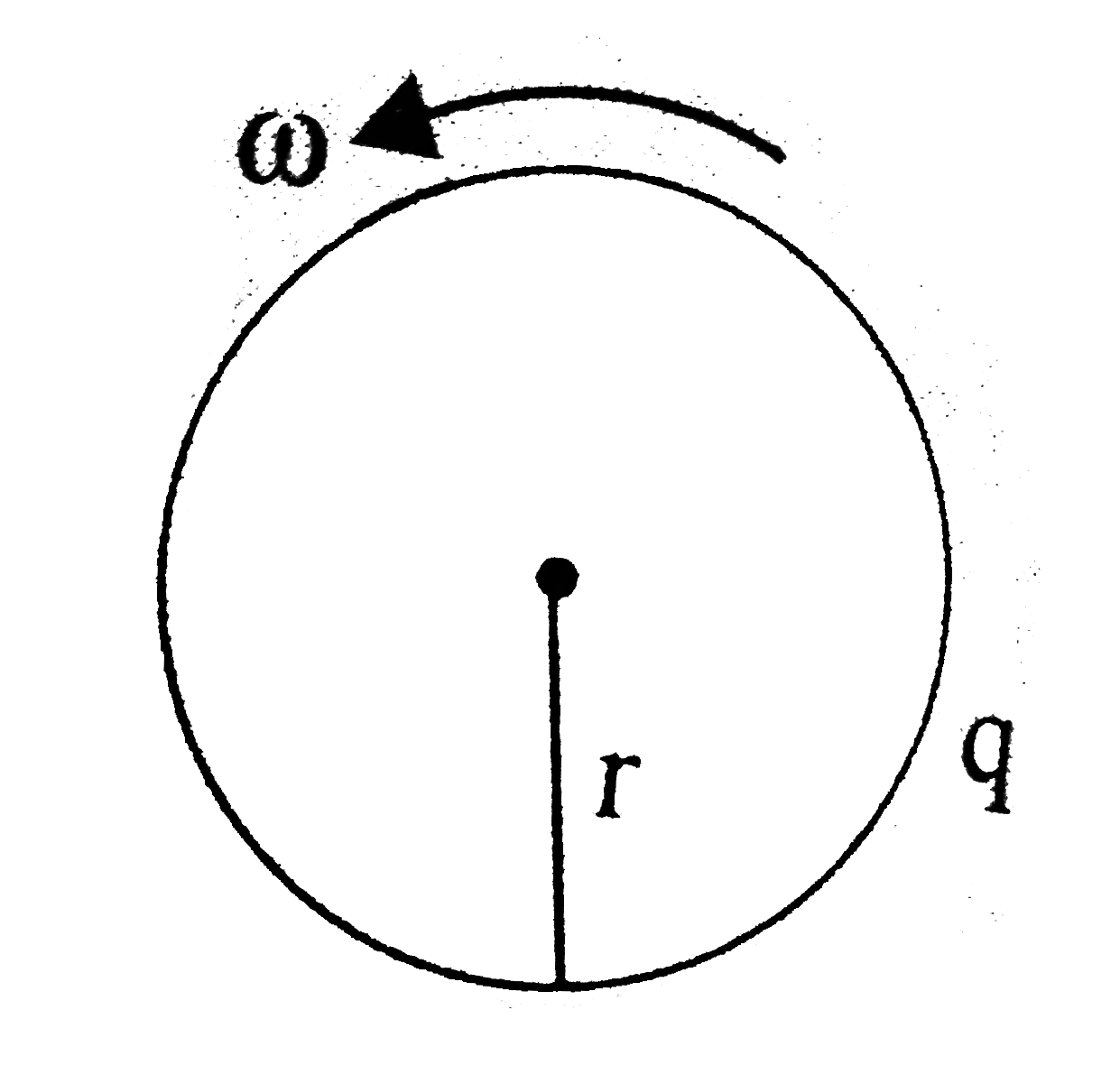Two cylindrical hollow drums of radii Rand2R, and of a commom height h, are rotating with angular velocities ω (anti-clockwise) and ω (clockwise), respectively. Their axes, fixed are parallel and in a horizontal plane separated by (3R+δ). They are now brought in contact (δ→0).
(a) Show the frictional forces just after contact.
(b) Identify forces and torque external to the system just after contact.
(c ) What would be the ratio of final angular velocities when friction ceases ?
Consider the situation shown below we have shown the frictional forces .

(b) F'=F=F where F and F are external forces through support
⇒Fnet=0(one each cylinder)
External torque =F×3R (anti- clockwise )

( c) Let ω1 and ω2 be final angular velocites of samaller and bigger drum respectively (anti - clokwise and clockwise Respectivelty)
Hence , Rω2⇒ω1ω2=2
Note :- We should be very careful while indicating direction of frictional forces.
Topper's Solved these Questions
- BOOK - NCERT EXEMPLAR ENGLISHCHAPTER - SYSTEM OF PARTICLES AND ROTATIONAL MOTION EXERCISE - very short answer type questions18videos
SYSTEM OF PARTICLES AND ROTATIONAL MOTION
- BOOK - NCERT EXEMPLAR ENGLISHCHAPTER - OSCILLATIONSEXERCISE - All Questions36videos
OSCILLATIONS
- BOOK - NCERT EXEMPLAR ENGLISHCHAPTER - THERMAL PROPERTIES OF MATTEREXERCISE - Very short Answer type Questions15videos
THERMAL PROPERTIES OF MATTER
Similar Questions
two cylindrical hollow drums of radii R and 2 R, and of a common height h , are rotating with angular velocities ω (anti- clockwise ) and ω (clockwise ) , respectively , their axes , fixed are parallel and in a horizontal plane separated by by 3R + δ , they are now brought in contact (δ→0)
(A) show frictional forces just after contact .
(B) identify forces and torque external to the system just after contact ,
(c) what would be the ratio of final of final angular velocities when friction ceases ?View SolutionTwo discs A and B are in contact and rotating with angular velocity with angular velocities ω1andω2 respectively as shown. If there is no slipping between the discs, then
 View Solution
View Solution
Knowledge Check
- Question 1 - Select One
A disc is rotating with angular velocity ω. A force F acts at a point whose position vector with respect to the axis of rotation is r. The power associated with torque due to the force is given by
A(→r×→F).→ωB(→r×→F)×→ωC→r.(→F×→ω)D→r×(→F.→ω) - Question 2 - Select One
Two discs of moments of inertia I1 and I2 about their respective axes , rotating with angular frequencies ω1 and ω2 respectively, are brought into contact face to face with their axes of rotation coincident. The angular frequency of the composite disc will be
Aa. I1ω1+I1ω2I1+I2Bb. I2ω1+I1ω2I1+I2Cc. I1ω1−I2ω2I1−I2Dd. I2ω1−I1ω2I1−I2
A body rotating with angular velocity ω stops after rotating for 2 sec. The torque necessary for this is?
View SolutionA torque T acts on a body of moment of inertia l rotating with angular speed ω. It will be stopped just after time
View Solution
Find velocity of piston A in the given situation if angular velocity of wheel of radius R is ω (constant) in the clockwise sense (O is fixed point)View SolutionA conducting ring of radius r having charge q is rotating with angular velocity ω about its axes. Find the magnetic field at the centre of the ring.
 View Solution
View SolutionA conducting ring of radius r having charge q is rotating with angular velocity ω about its axes. Find the magnetic field at the centre of the ring.
 View Solution
View SolutionA disc is rotating with angular velocity ω. A force F acts at a point whose position vector with respect to the axis of rotation is r. The power associated with torque due to the force is given by
View Solution

